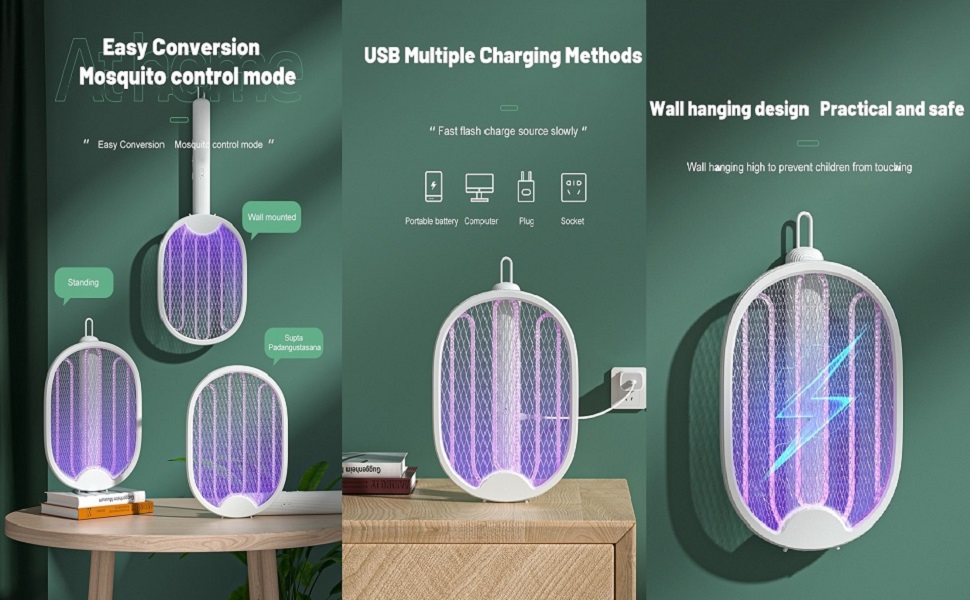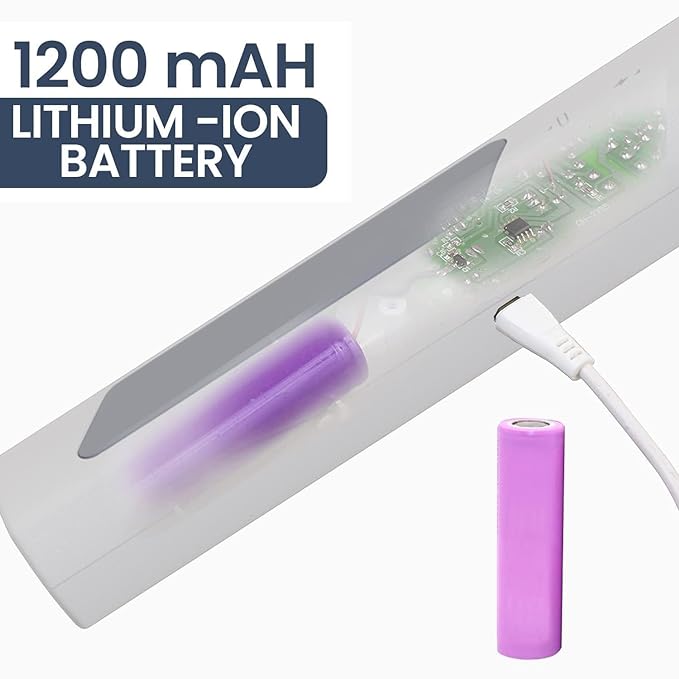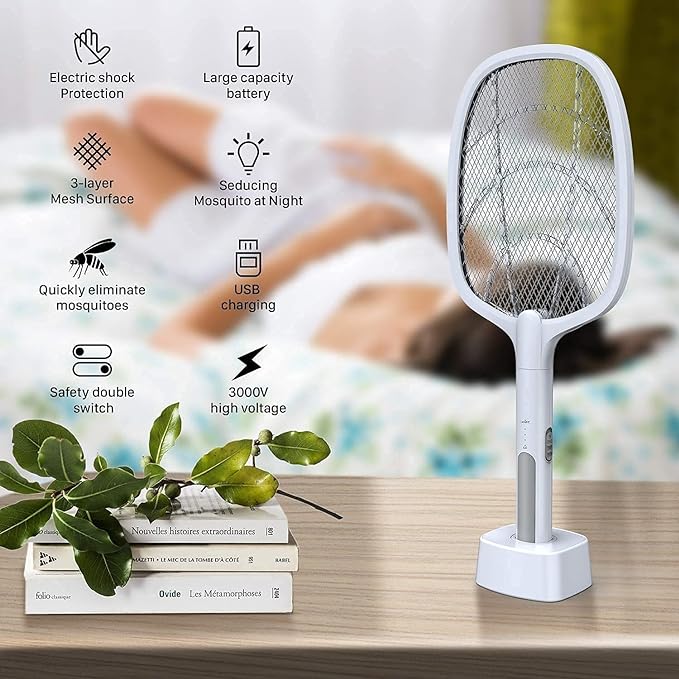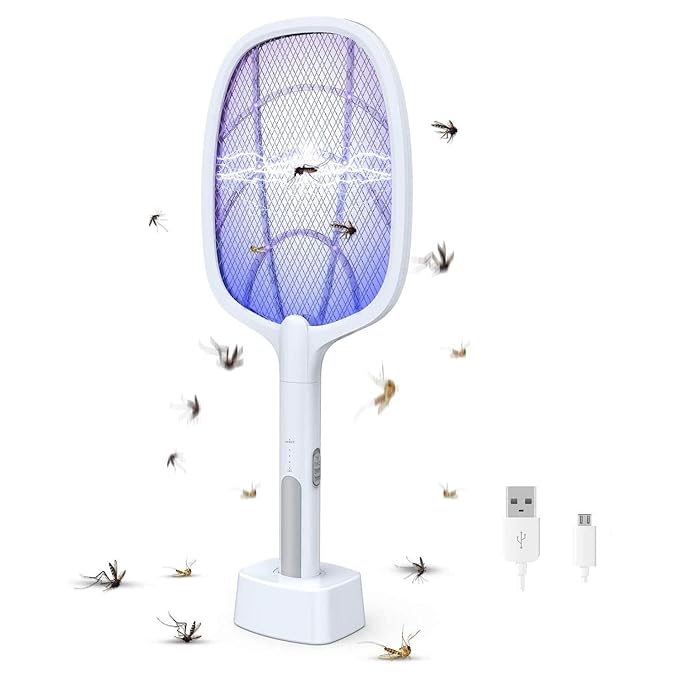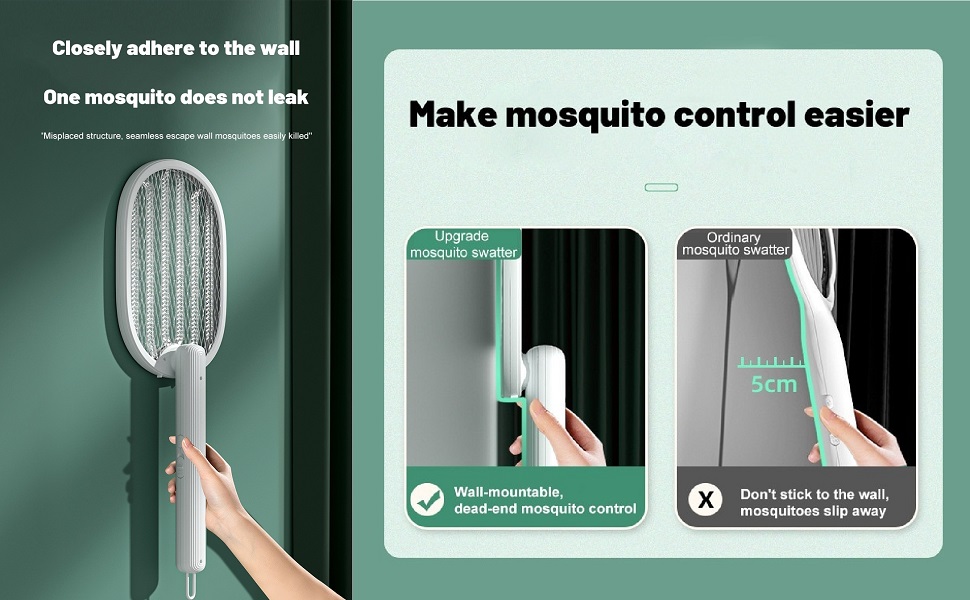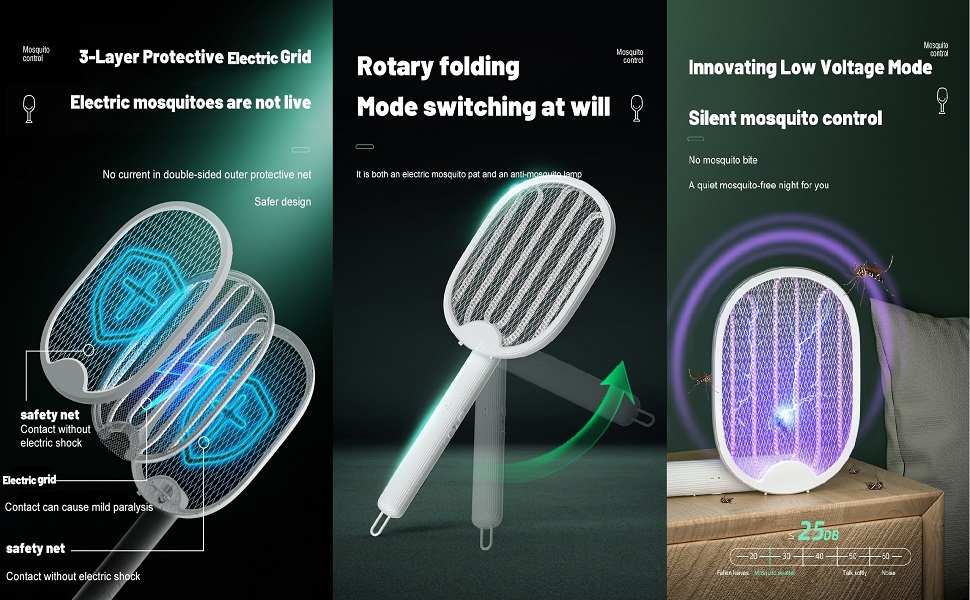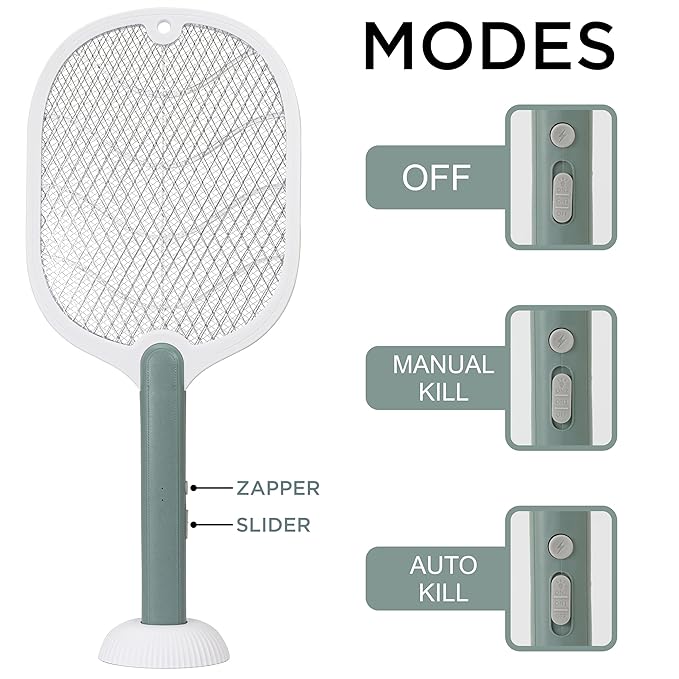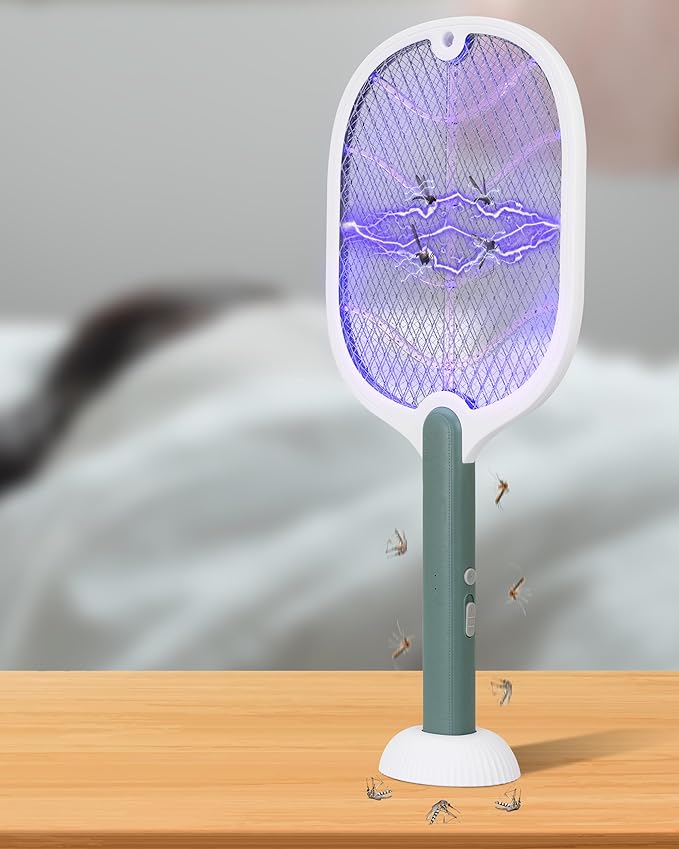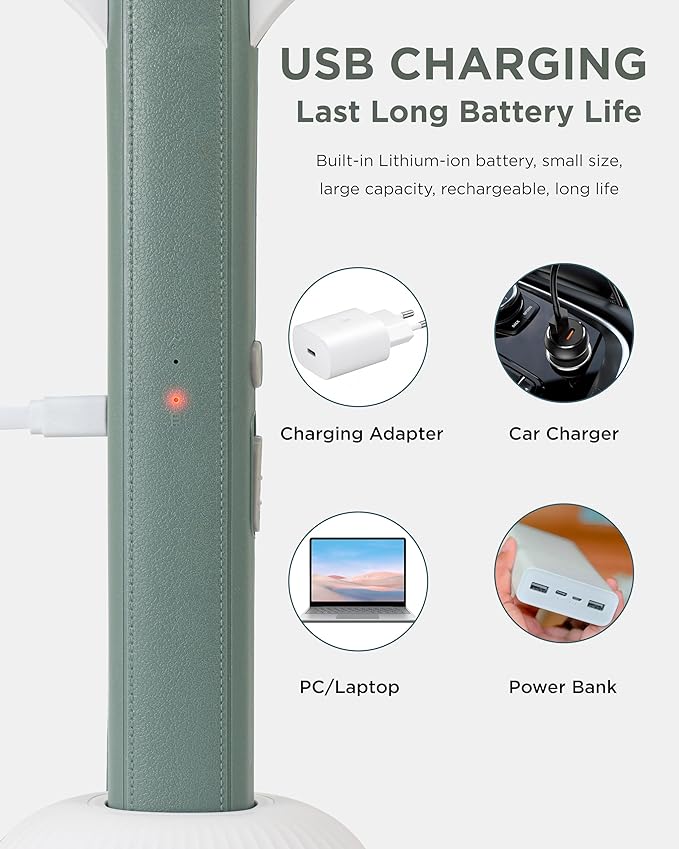Best Mosquito Bat With UV Light In India
How Mosquito Bats Work?
UV light attraction:
Impact on Mosquito Behavior by UV Light Attraction:
- Attractant for Mosquitoes: UV light has been found to attract mosquitoes. Mosquitoes are known to be drawn to specific wavelengths of light, with UV light being one of them. This attraction is due to the fact that many flowers, which mosquitoes feed on, reflect UV light. Mosquitoes use visual cues to locate their hosts, and UV light can serve as a powerful attractant for them.
- Disruption of Normal Behavior: The presence of UV light can disrupt the normal behavior of mosquitoes. Instead of following their usual patterns of seeking out hosts for blood meals or nectar, mosquitoes may be lured towards UV light sources. This diversion can interfere with their feeding and reproductive activities, potentially reducing their overall population.
- Trapping and Monitoring: UV light can be incorporated into mosquito traps and monitoring devices. By exploiting mosquitoe’s attraction to UV light, these traps can effectively capture and monitor mosquito populations. This method can be particularly useful for surveillance and control programs, providing valuable information about the prevalence and distribution of mosquito species.
- Integration in Mosquito Control Strategies: Understanding the impact of UV light on mosquito behavior allows for the development of targeted control strategies. UV light can be integrated into existing mosquito control methods, enhancing their efficiency. For example, traps equipped with UV light can complement insecticide-based approaches, offering a more comprehensive and sustainable solution.
3 Best Mosquito Bat With UV Light In India
| Product Details | |
|---|---|
| Title: | Mosquito-Bat-With-UV-Light-Lamp-Five-Nights-Mosquito-Killer-Autokill-2-In-1-Mosquito-Racket-1200mAh-Lithium-Ion-Rechargeable-Battery-Handheld-Electric-Set-Swatter |
| Brand Name: | SMIRLY |
| Rating: | 4.8 out of 5 (16,466 + ratings) |
| Reviews: | 1,835 + reviews available |
| Product Details | |
|---|---|
| Title: | Mosquito-Bat-with-UV-Light-Lamp-Five-Nights-Mosquito-Killer-Autokill-2-in-1-Mosquito-Racket-1200mAh-Lithium-ion-Rechargeable-Battery-Handheld-Electric-Fly-Swatter |
| Brand Name: | CeraVe |
| Rating: | 3.9 out of 5 (17,208 + ratings) |
| Reviews: | 2,078 + reviews available |
| Product Details | |
|---|---|
| Title: | Weird Wolf 2 in 1 UV Light Mosquito Racket Bat with Base Stand, Lithium Battery, USB Charging |
| Brand Name: | WEIRD WOLF |
| Rating: | 4.3 out of 5 (684 + ratings) |
| Reviews: | 353 + reviews available |
Benefits of Mosquito Bats with UV Light
Mosquito Bats Are Environmentally Friendly
- Eco-Friendly Solution: Mosquito bats that utilize UV light are often considered eco-friendly alternatives to chemical insecticides. They do not rely on harmful chemicals, making them a safer option for both humans and the environment. This is particularly important in areas where minimizing the use of pesticides is a priority.
- Reduced Dependency on Chemicals: The integration of UV light in mosquito bats contributes to a reduction in the dependency on chemical insecticides. As UV light can attract and trap mosquitoes, the need for spraying chemical agents may be decreased. This, in turn, helps in minimizing the potential negative effects associated with widespread pesticide use.
- Low Energy Consumption: UV light sources used in mosquito bats typically consume less energy compared to traditional lighting options. This makes mosquito bats with UV light more energy-efficient, contributing to sustainability and cost-effectiveness in the long run.
- Non-Toxic: Mosquito bats are an environmentally friendly pest control option because they do not rely on harmful chemicals or toxins. Traditional mosquito control methods often involve the use of insecticides, which can have negative effects on the environment, including soil and water contamination. Mosquito bats, on the other hand, operate by using physical means (electricity) to eliminate mosquitoes, avoiding the need for chemical intervention.
- Minimal Energy Consumption: Mosquito bats are typically designed to operate on low power consumption, making them energy-efficient. This reduces the overall environmental impact associated with their usage. In contrast, other mosquito control methods such as insecticide sprays or fogging may have a higher energy demand and contribute to air pollution.
- Targeted Pest Control: Mosquito bats specifically target mosquitoes, minimizing the impact on non-target species. This targeted approach helps maintain ecological balance by not adversely affecting beneficial insects, birds, or other wildlife in the environment. In comparison, broad-spectrum insecticides can harm both pests and beneficial organisms.
Safety for Humans and Pets from Mosquito Bats
- No Harmful Residues: Since mosquito bats do not use chemical agents, there is no residue left behind after use. This absence of residue ensures the safety of humans and pets who may come into contact with the treated areas. In contrast, insecticides can leave toxic residues on surfaces, posing potential health risks for humans and pets.
- No Exposure to Harmful Chemicals: Traditional mosquito control methods often involve the application of chemical sprays or repellents. Mosquito bats provide a safer alternative as they eliminate mosquitoes through physical means, avoiding the need for humans and pets to be exposed to potentially harmful chemicals.
- Reduced Respiratory Risks: Mosquito bats do not release airborne particles or fumes that can be inhaled, reducing respiratory risks for both humans and pets. This is in contrast to certain insecticides or repellents that may have volatile components, posing respiratory hazards.
Top Features to Look For in Mosquito Bats
- Effective Voltage and Grid Design: Look for mosquito bats with sufficient voltage and an effective grid design to ensure the quick and efficient elimination of mosquitoes upon contact. A well-designed grid prevents mosquitoes from escaping and enhances the overall effectiveness of the device.
- Rechargeable Battery: Opt for mosquito bats with rechargeable batteries for cost-effectiveness and convenience. Rechargeable batteries reduce the need for frequent replacements, making the device more sustainable and environmentally friendly.
- Safety Features: Choose mosquito bats with safety features such as a protective mesh to prevent accidental contact with the electrified grid, ensuring the safety of users, especially children and pets.
- Portability and Durability: Consider mosquito bats that are lightweight, portable, and durable. These features make it easier to use the device in various locations and ensure longevity.
- Easy Cleaning Mechanism: Mosquito bats with easy-to-clean designs facilitate maintenance and hygiene. Look for devices with removable trays or grids that make it simple to dispose of dead mosquitoes and keep the bat clean for optimal performance.
Tips for Using Mosquito Bats
Proper Placement of Mosquito Bats:
- Height Placement: Mount mosquito bats at a height of about 6 to 7 feet from the floor to ensure effective coverage and reach.
- Strategic Locations: Place bats near entrances, windows, and areas with high mosquito activity for optimal results.
- Avoid Obstructions: Ensure there are no obstacles like furniture or curtains blocking the bat’s path to allow unhindered mosquito interception.
- Multiple Units: Consider using multiple mosquito bats in larger spaces for comprehensive mosquito control.
Maintenance and Cleaning Tips of Mosquito Bats:
- Regular Inspection: Periodically check the mosquito bats for damage, loose parts, or signs of wear to ensure they function correctly.
- Cleaning Frequency: Clean the bats at least once a month or as needed to prevent dust accumulation that can affect performance.
- Use Soft Cloth: Wipe the surface with a soft, damp cloth to remove dirt and debris. Avoid using abrasive materials that may damage the bat’s casing.
- Unplug Before Cleaning: Always unplug the mosquito bat before cleaning to ensure safety.
- Replace Batteries: If the mosquito bat operates on batteries, replace them regularly to maintain consistent performance.
- Store Properly: During periods of non-use, store the mosquito bats in a cool, dry place to prevent damage and extend their lifespan.
- Follow Manufacturer’s Instructions: Adhere to the manufacturer’s guidelines for maintenance and cleaning outlined in the product manual for best results and safety.
Tips for Purchasing the Right Mosquito Bat
Budget considerations:
Reading product reviews:
Comparisons of Mosquito Bats with Other Mosquito Control Methods
Chemical Repellents:
- Effectiveness: Mosquito bats are considered more effective than chemical repellents as they actively target and eliminate mosquitoes in the immediate vicinity, while repellents only deter mosquitoes from landing on treated skin or surfaces.
- Safety: Mosquito bats generally have a lower risk of adverse health effects compared to some chemical repellents, which may contain potentially harmful ingredients.
- Environmental Impact: Mosquito bats are often considered more environmentally friendly, as they don’t involve the release of chemical substances into the air or the environment.
Traditional Mosquito Nets:
- Targeting: Mosquito bats are more dynamic in targeting mosquitoes actively flying in the area, whereas traditional nets provide passive protection by creating a physical barrier between the sleeper and mosquitoes.
- Mobility: Mosquito bats offer greater mobility and flexibility as they can be moved around easily to target mosquitoes in different areas, while traditional nets are fixed around a bed or sleeping area.
- Ease of Use: Mosquito bats are generally easier to use and require minimal setup, while traditional nets may need proper installation and maintenance to be effective.
Frequently Asked Questions (FAQ'S)
- Q: Are mosquito bats with UV light safe for indoor use?
Mosquito bats with UV light are generally safe for indoor use, but it’s essential to follow safety guidelines and ensure proper ventilation when operating them indoors.
- Q: How long do the batteries in mosquito bats typically last?
The battery life of mosquito bats varies among models, typically lasting several hours to a few days, depending on the brand and usage patterns.
- Q: Can mosquito bats be used in areas with high mosquito activity?
Mosquito bats are effective in areas with high mosquito activity, providing a practical solution for controlling mosquitoes in regions with intense mosquito populations.
- Q: Do mosquito bats work against other flying insects?
While primarily designed for mosquitoes, mosquito bats can also be effective against other flying insects, offering a versatile solution for controlling various pests.
- Q: Are there any maintenance tips for maximizing the lifespan of a mosquito bat?
To maximize the lifespan of a mosquito bat, regular cleaning, and maintenance are crucial; ensure the device is free from debris, and replace batteries promptly to ensure optimal performance.

